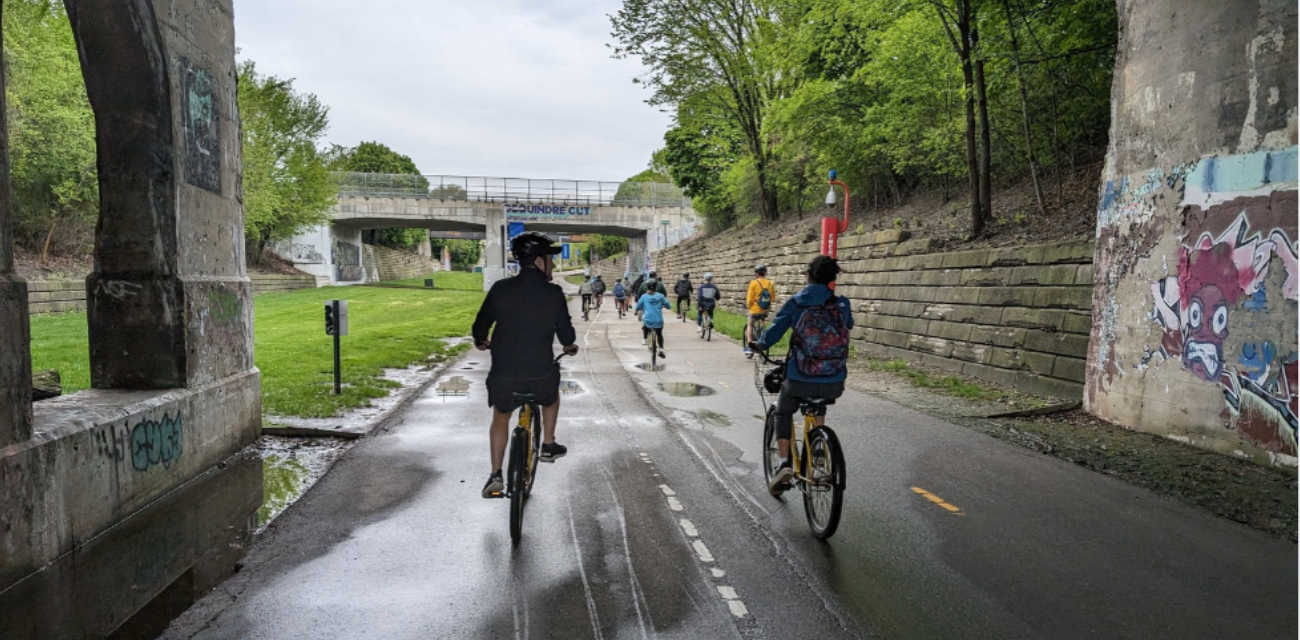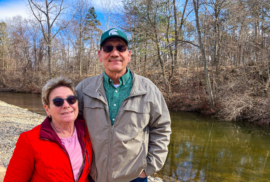From volatility to consensus: the RTA’s founding story

Authored by

Grace Noyola
Connect With the Experts

Ross Gavin
On May 18, the Regional Transit Authority (RTA) of Southeast Michigan announced the departure of board chair Paul Hillegonds, a longtime environmental ally, as he closed out his term.
Today, the RTA works across four counties to provide interconnected transit services that bridge urban and suburban communities. The opportunities to enhance those services are abundant and exciting. But not so long ago, this was not the case.
Hillegonds first got involved with transit in Southeast Michigan during his second term in the legislature, in the 1980s. The federal government had offered significant funds to address transportation in Detroit. At the time, Detroit residents strongly supported a subway that ran from the suburbs into the city, but suburban residents wanted the funds to be allocated across the region.
Despite attempted negotiations, there was no consensus in sight, and Detroit lost out on that federal funding. Afterwards, the question of whether to prioritize funding based on total miles covered, which favored the needs of suburban communities, or total people served, which favored the city, became a source of tension that shaped the transit conversation for years to come.
But Hillegonds knew that enhancing transit in Southeast Michigan was critical. There were thousands of Detroiters without a vehicle who needed reliable transportation across the city and into the suburbs. There were thousands of suburban residents traveling in and out of the city every day in personal vehicles, which led to significant congestion on highways and poor air quality for the entire region. Detroit needed a transit leader.
“Operating public transit has to be a local priority. I knew that unless we could come together to invest in local transit, we would never be able to compete for federal dollars for things like rail, buses, etc.,” said Hillegonds.
Years later, the U.S. Department of Transportation offered to help fund a 3.3 mile rail down Woodward Avenue in Detroit, with one condition: the state must create a regional authority to distribute the funds. In 2012, the RTA was formed, and Gov. Rick Snyder appointed Hillegonds as Board Chair.
The newly formed board had one priority: establish a funding model that people all across the region could stand behind. To ensure diverse transit perspectives were heard as this model was established, the board relied on a Citizens Advisory Council, which was required as part of the law that formed the RTA. Under Hillegonds’ leadership, the RTA also developed a powerful working relationship with environmental advocates like the Michigan Environmental Council.
“The RTA depends on an interconnected network of advocates who are committed to advancing transit in the region,” said Hillegonds. “We count on them to help us gather intel, inform the public on opportunities, support funding campaigns and more. At that time, this support and insight was critical, because we knew we would need community members and advocates to help us communicate about the work we’d be doing.”
After decades of fighting about how these federal dollars should be allocated, the board came together and agreed on a 50% total miles covered, 50% total people served funding distribution model. This formula has been maintained for over a decade now, without any controversy.
The RTA has worked in partnership with transit operating authorities, community members, environmental advocates, and private transit providers to pilot a number of projects that advance transit in the region, from testing out ideas like “FAST”” service on Woodward, to studying mobility equity, to developing a cross-county transit mobile app, and more.
For Hillegonds, the true reward of his time with the RTA is the unlikely collaboration that brought about long-sought improvements to Detroit’s transportation arena.
“Reflecting on my time as Board Chair, I’m immensely proud of how the board put aside all parochial concerns in a united commitment to serving the region. We all believe that Detroit and its surrounding suburbs can benefit from important investments in mobility and transit, and in working together we’ve been able to achieve some great things.”
And as the RTA welcomes Dave Massaron as their new Board Chair, the opportunities for continued transit growth are abundant, but implementing them won’t be easy.
“I am delighted with Dave’s appointment as Board Chair. I know him from his time working for the City of Detroit and as State Budget Director. I believe his experience in the region and with state policy makers will greatly benefit the RTA,” said Hillegonds. “The RTA needs to continue to communicate with local transit providers, regional leadership and advocates in order to get transit on the region’s list of priorities. We need to support transit provider efforts to recruit and retain operational staff to keep transit running smoothly. Most notably, we need to communicate more than ever with our community at large to continue informing citizens on smart transit in the region. It’s a tall order, but I know Dave is well prepared to lead that charge.”
In Oakland County, a recently passed millage has the opportunity to improve the frequency and reliability of busing services in the area, which could serve as a model for why it’s so important to invest in transit across the region.
But Detroit isn’t the only place in need of continued transit enhancements. Across the state, improved regional transit would not only reduce our greenhouse gas emissions and enhance travel access, but also would help create the kind of infrastructure that combats Michigan’s population decline.

“For many people, affordable and accessible regional and statewide transit is a huge factor in considering where to plant their roots,” said Ross Gavin, urban land use and infrastructure policy director for the Michigan Environmental Council. “Legislatively, we need to allocate more funding into the Comprehensive Transportation Fund to allow for more money to flow into bus operating, passenger rail, and general capital improvements.. Lawmakers in Lansing recognize that these investments can help ensure we’re making our state a place that’s attractive to Michiganders, current and future.”
Discover
Power environmental change today.
Your gift to the Michigan Environmental Council is a powerful investment in the air we breathe, our water and the places we love.
Sign up for environmental news & stories.
"*" indicates required fields




